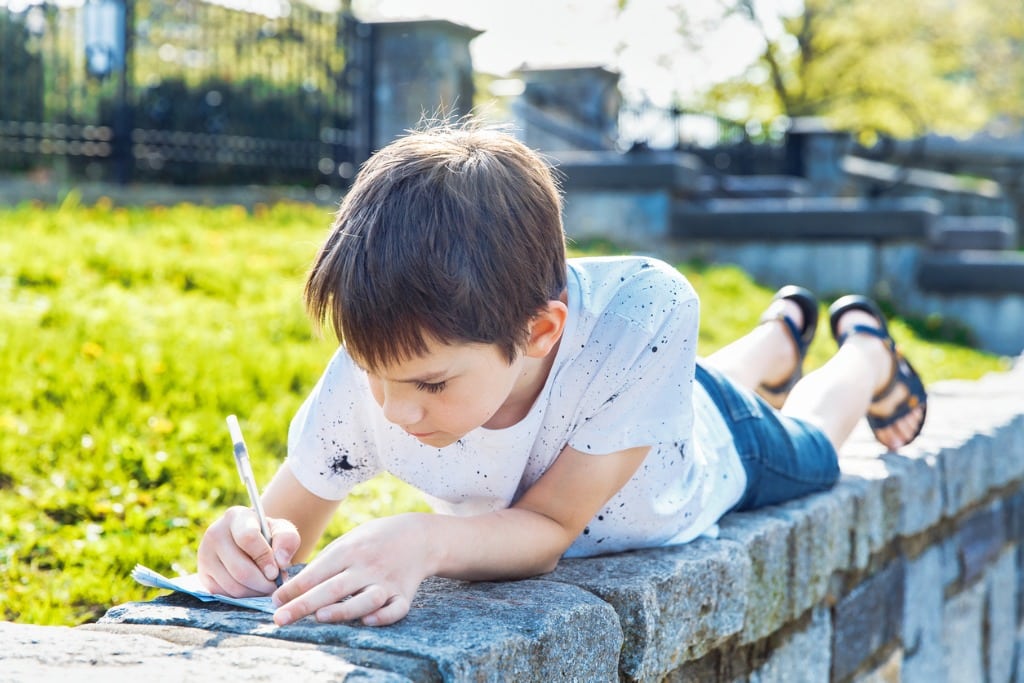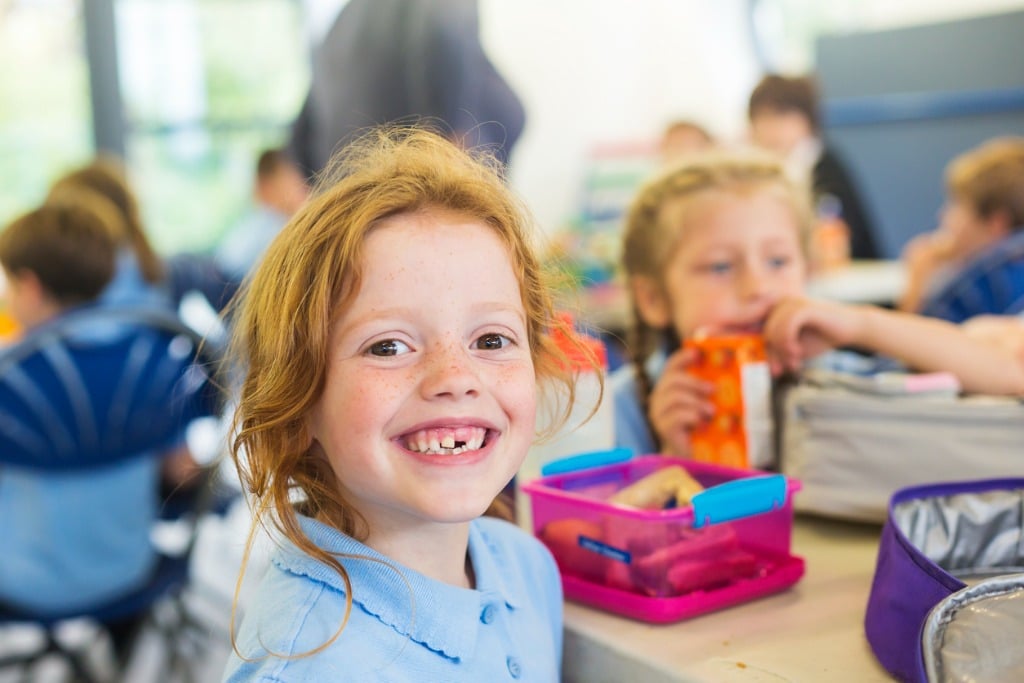There are so many opportunities during the first week of school to set your students up for success in your classroom! In the midst of summer vacation, your teacher-brain is probably bouncing back and forth between all the excitement and potential for the new school year and all the anxiousness of getting back into your teaching schedule. Luckily, the solution for both these things is the same: building your classroom community!
Research shows that students benefit physically, mentally and academically by having a robust network of social supports available to enhance their potential. An important part of that social support is the connections they build with their peers, and the classroom is where those connections begin!
By engaging with your students from a community mindset, you will be helping them build core interpersonal and social-emotional skills that will guide them to success during their academic careers and for the rest of their lives. The following first-week or first-day-of-school activities will help you build your classroom community.
Getting to Know Each Other
One of the basic building blocks of forming a community within your classroom is ensuring your students feel secure in their abilities to interact in a considerate and mutually affirming environment.
You can set an example by modeling considerate and affirming behavior for your students in your own interactions in the classroom. You can also make this mindset easier for students by doing activities that build empathy, encourage them to develop a curiosity about others and delight in their similarities and differences.
 You and Me Venn Diagrams
You and Me Venn Diagrams
If you want your students to get to know each other better, using Venn diagrams to guide their conversations is a great way to do it.
Start by asking if anyone knows what a Venn diagram is and what it does (it visually compares and contrasts two different things). Then, pair students up and have them work together to fill out a shared diagram about their similarities and differences.
You can get them started by asking a series of general questions or writing the questions up on your whiteboard in case anyone gets stuck. Good questions include “Do you have any siblings?” “What are your hobbies?” “What media (movies, books, tv) do you like?” “What’s your favorite school subject?” and “What do you want to be when you grow up?”
Once your students have finished their diagrams, hang them for display on your back-to-school bulletin board or a wall where there’s some free space. Give students a few minutes to read each other’s work and appreciate their differences and similarities.
This fun activity also has the benefit of being a fun way to introduce—or refresh—your students on Venn diagrams. It is also a great activity for your students to refer back to the next time you use these types of diagrams in your classroom.
Classmate Bingo
If you’re more interested in getting everyone to know each other a little better, this is a good icebreaker that will get everyone up, walking around the room and mingling. It also helps shyer students build confidence interacting in a group setting by presenting them the opportunity to practice short conversations with a lot of people.
Create Bingo cards ahead of time (or download our FREE template) that have different traits or accomplishments that will apply to your students. It’s best to be more general than specific and have more than one option per type of trait. Here are some ideas to get you started: was born in this state, moved here from out of state, has traveled out of the country, has traveled to less than two other states, has siblings, is an only child.
To play, each student needs a Bingo card and a writing utensil to mark off the spaces. Give them time to mingle around the room and ask each other questions to fill out their cards. When they find someone who matches a space, that student signs their initials on the Bingo card.
Some rules you might consider setting are limiting the number of spaces one student can fill in on another student’s card or limiting students to one question per conversation so they can meet several new classmates.
You can play until someone gets a traditional Bingo row and then have them give a fact about themselves to the class that isn’t on the Bingo card. You can also play Blackout Bingo and try to fill entire cards (this might require giving out free spaces at the end for any spaces that don’t have a matching student).![]() You can make this activity easier on yourself by downloading our FREE classroom bingo template!
You can make this activity easier on yourself by downloading our FREE classroom bingo template!
Are you Enjoying this Content?
Introduce the (Entire) Class
If you want to incorporate a memory game into your introductions, this is the activity for you! Have each person in the class introduce themselves and give a very short (five words or less) fact about themselves.
The catch is the second person has to introduce themselves and then repeat what the first person said; the third person introduces themselves and then repeats what the second person and the first person said. The further you get around the room, the more challenging it gets.
When someone doesn’t remember them all, you can either congratulate them for trying and move on to the next student or you can start the chain over with the next person. After you’ve gotten to the end of the room, you can ask if anyone thinks they can remember all of their classmates’ names and facts and see if any of them would like to show off their memory skills in front of the class.
If your class is especially enthused with this activity, it can be reworked into other lessons by following the pattern of answering a question and then repeating the previous answers given (for example, “I liked the sharks, Kim likes the octopus, Miguel likes jellyfish, Abeni likes dolphins,” etc. for a lesson about the ocean).
Getting to Know Yourself
One of the cornerstones of social-emotional learning is developing an awareness of self that involves mindfulness, reflection and healthy emotional processing. These skills help build a classroom community and are surprisingly easy to teach. You just have to encourage students to think more about themselves, their emotions, their experiences, their hopes and their dreams.
Four Corners
If your students are showing signs of being overly bored, distracted or like they need a brain break to decompress from a challenging lesson, you can feed two birds with one scone with this activity.
Four Corners is a game similar to Simon Says, as the leader (you) gives instructions, and the students have to respond. However, instead of calling out silly poses and actions, you’re asking a question and calling out four answers, then assigning each answer to a corner of the room.
Students then move to the corner closest to their answer; if anyone says they don’t fit in one of the corners, you can give them the opportunity to share their response and then have the class discuss which corner is the closest option.
This helps everyone understand that even if we don’t all agree on something (like our favorite ice cream flavor), those differences are what make us unique. However, our differences shouldn’t be used to keep us apart or exclude anyone. Rocky road is pretty similar to chocolate, after all.
Dear Future Self
Having students write a letter to their future selves helps them consider who they believe themselves to be and who they expect to become. It also allows them to think about any changes they want to make in their lives to make their future self more likely to be someone who’s closer to their goals. (For example, if they want to play a sport professionally or become a singer, they can look at ways to start developing those skills now.)
 Set a date in the future (at least one year or more) and ask students to imagine where they think they’ll be at that time. Have them include in the letter what they’d want to say to their future self and what their future self would like to hear. After they’ve written the letter, ask them to think about different things they can do to become the best version of themselves and which of those things they can start doing right now.
Set a date in the future (at least one year or more) and ask students to imagine where they think they’ll be at that time. Have them include in the letter what they’d want to say to their future self and what their future self would like to hear. After they’ve written the letter, ask them to think about different things they can do to become the best version of themselves and which of those things they can start doing right now.
There are several things you can do with the letters to make this activity more meaningful. You could mail the letters back to students at the end of the school year. You could have students decorate envelopes marked with a future date and instruct them to keep the letter somewhere safe at home until the date they’re supposed to open it.
If the email service provider your students use allows them to schedule future emails, they can schedule their letters to be emailed to themselves on a future date (Gmail can do this easily). This can be fun for students to set up so they’ll receive the letter at the beginning or end of a big transitional year, like going from grade school to middle school or even high school.
“Who Am I?” Book
This is a fully customizable writing project that you can modify into whatever you want it to be, as long as it involves students considering the question that’s inspired a million memoirs and launched a thousand legacies: “Who Am I?”
We recommend using this activity to familiarize students with the process of a long-term writing project that will continue throughout the year and includes several milestones. This helps to build foundational scaffolding skills students will use throughout the rest of their academic careers (trust us, their college professors will be ecstatic).
Suggested milestones include having students choose past writings to edit and improve, selecting the writings they feel best represent themselves as a person and the writings they want to have published in a classbook.
Students can write by hand in a notebook or do their writings in a word processor. It’s most effective to offer students a choice of writing prompts: one literal, one fantastic and one free choice. This allows them to choose a prompt that fits their comfort and skill level and reduces the odds of students claiming that they can’t think of anything to write about.
Literal prompts include choices like “What is your favorite memory?” “What kind of food do you like best?” or “Who is a family member you enjoy spending time with, and why?”
Fantastic prompts include choices like “What’s another way your favorite movie could have ended?” “If you could meet anyone from history, who would it be?” or “Would you rather be a banana or a tomato?”
The free choice option gives students the opportunity to write about any topic they choose.
Sign Up to Receive Your FREE Classbook Publishing Kit
Students love to collaborate on class projects together, so start thinking now about which of your classroom activities would be best to turn into a book. It’s even more exciting if you involve them in the planning phases—such as by having them choose the book theme from a list you make—and keep them in the loop during the publishing process.
Simply sign up to receive your FREE classbook publishing kit, and we’ll turn your young learners into published authors. Classbooks are a meaningful keepsake and time capsule for your classroom, and your students’ parents can order copies too. You can also check out our blog and online Teacher’s Lounge for more writing activities, lesson plans and teaching strategies.
Now shake out your new-school-year nerves and start planning that first week!







